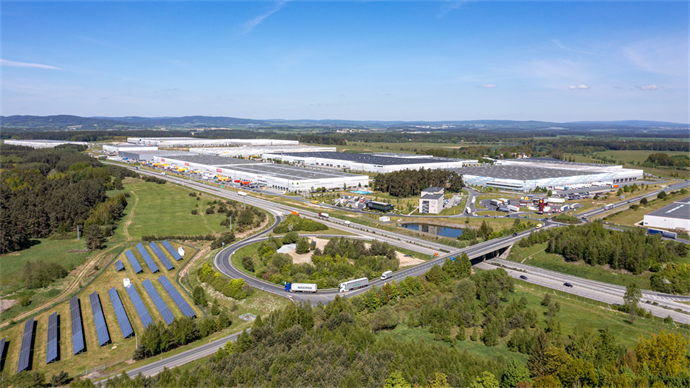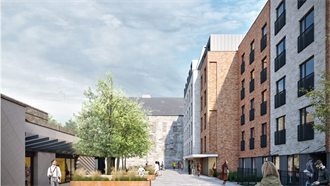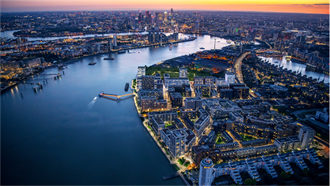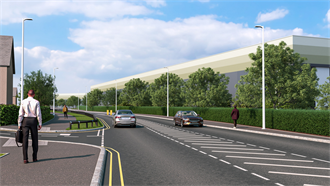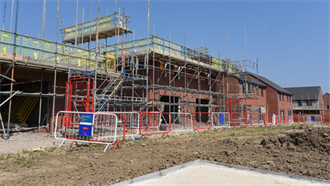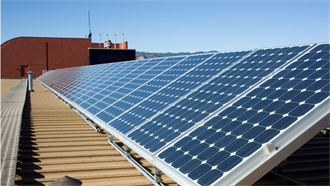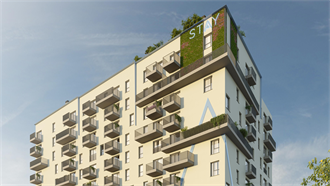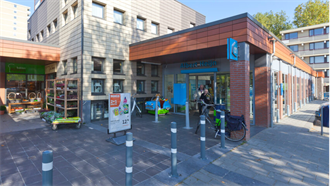Pan-European logistics specialist CTP is confident that unrelenting occupational demand will continue to buoy the sector amid the current economic turbulence.
In an interview with PropertyEU, Bert Hesselink, Group Client Relationship Director at CTP, gives his views on the challenges facing the industrial and logistics sector in Europe, the trends shaping the market, and the long-term outlook.
How has war in Ukraine affected your business?
Although four of the ten markets within which CTP operates border Ukraine (Poland, Slovakia, Hungary and Romania), we do not own any assets or development sites in Ukraine or Russia, so as a business, we have not experienced any direct impact from the war. However, our priority since Russia’s invasion in February, has been to support colleagues with any personal connections to the region, as well as do what we can to support the humanitarian effort.
Of course, indirectly, there has been the global impact of increasing economic headwinds and heightened supply chain disruptions. As a developer/owner, during the first half of 2022, CTP experienced first-hand the extent to which the existing inflationary pressures following the pandemic, were being further exacerbated by the war, but our inhouse construction teams were able to source stock from alternative markets, as well as drive some cost efficiencies through group wide procurement. Equally, more broadly within the industrial and logistics sector, much of this inflationary pressure has been compensated by rising rental levels on new developments.
As was the case during the pandemic, the supply side disruption has continued to drive demand for our well located industrial and logistics assets, as occupiers seek to enhance the resilience of their supply chains by moving from a ‘just in time’ to ‘just-in-case’ inventory management. This has led to occupiers choosing to hold increased inventory levels, or shortening supply chains by nearshoring or reshoring production closer to consumption markets etc. This trend has further strengthened demand for high-quality assets within CEE, which in turn resulted in record occupancy levels within many of our key markets such as the Czech Republic. This occupational demand, together with competing supply becoming increasingly constrained, is driving rental growth across our standing portfolio.
We are mindful that the macroeconomic environment will remain challenging for some time to come. However, we also remain optimistic that the underlying fundamentals within the CEE industrial and logistics sector will remain supported by long-term structural drivers of occupational demand.
What key development opportunities do you see in terms of countries/corridors and building/asset types?
Within all ten European markets in which we are active, we are seeing several trends which present development opportunities for developer/long-term owner-managers such as CTP.
A few examples include:
- As mentioned, companies are actively looking for ways to improve their supply chain resilience. This is resulting in more demand for warehouse space both for manufacturing and logistics operations across Europe. Markets in western Europe benefit from high population densities and spending power and markets further east and southeast benefit from lower la-bour costs.
- Internet sales increased rapidly during the pandemic in 2020 and 2021 and remain well above pre-pandemic levels even after a slight pullback when social distancing restrictions in Europe were eased. E-commerce penetration continues to grow in both established and less mature markets and because online sales fulfilment is usually better served in modern warehouses, this will underpin demand for these advanced sustainable facilities including large fulfilment centres and last-mile urban assets.
- The accelerating decarbonisation transition and consequently the increasing importance placed on energy efficiency, will mean tenants’ demand for highly sustainable buildings can only expand, particular at pan-European locations where on-site renewable energy is produced and can be stored.
- With ESG now playing a much more prominent role in how companies operate, environmental and societal considerations are becoming strongly embedded in every aspect of how a property is developed and managed, from building certification to work conditions and from CSR to governance. The opportunity for CTP, is to continue to raise the bar and set new standards with regards to green buildings and wellness certifications.
What will be the impact of a looming recession on occupier demand, e-commerce, nearshoring, etc?
Currently occupational demand is proving resilient, and we don’t anticipate a significant fall, but we have seen in the past two years that the composition of this demand does evolve. Whereas much of occupier demand in 2021 was linked to e-commerce, we now see this demand spreading to manufacturing space, which is increasing quickly, especially in Central and Eastern Europe.
Past recessions have shown that some tenant sectors will fare better during an economic downturn than others. For example, value/discount retail chains typically do well, and the forthcoming recession may show that consumers, who have become more familiar with e-commerce during the pandemic, will now find greater value in shopping online. Historically, during economic downturns, we have also seen industrial and logistics occupiers relocate to Central and Eastern Europe for cost reasons and this may well occur again.
What are the pros and cons of the different industrial/logistics developer business models?
We are firmly of the belief that CTP’s vertically integrated developer/owner manager model provides us with a strategic advantage generally, but particularly during economic downturns. By having full control over the lifecycle of an asset - from in house site sourcing and construction to dedicated onsite property management teams - we can enhance economic efficiencies and increase operational agility. This allows us to not only respond swiftly and effectively to the evolving requirements of our existing occupiers, but also potential clients and wider market opportunities.
In recent years we have also increasingly seen a ‘battle for space’ and rising public concerns over large, anonymous, grey, and often stand-alone logistics buildings. This is particularly the case within densely populated areas in the Netherlands and Germany, but progressively other eastern European countries also. This means that CTP’s ‘Parkmakers’ philosophy and approach, which focuses on integrating our parks into the surrounding landscape as well as better harmonising the buildings with nature, is increasingly resonating with municipalities, communities, and occupiers.
By creating ‘parks’ which are green in character and focused on the wellbeing of its users and wider community CTP is seeking to create a real-estate offering that is not only fit for purpose today, but also future proofed so to meet the needs of all stakeholders over the longer-term.
Equally, as a long-term owner/manager, occupiers as well as broader stakeholders, are increasingly valuing the fact that our interests are fully aligned with theirs. This long-term, approach allows us to build enduring partnerships, which we believe will continue to deliver CTP with a competitive advantage for years to come.


